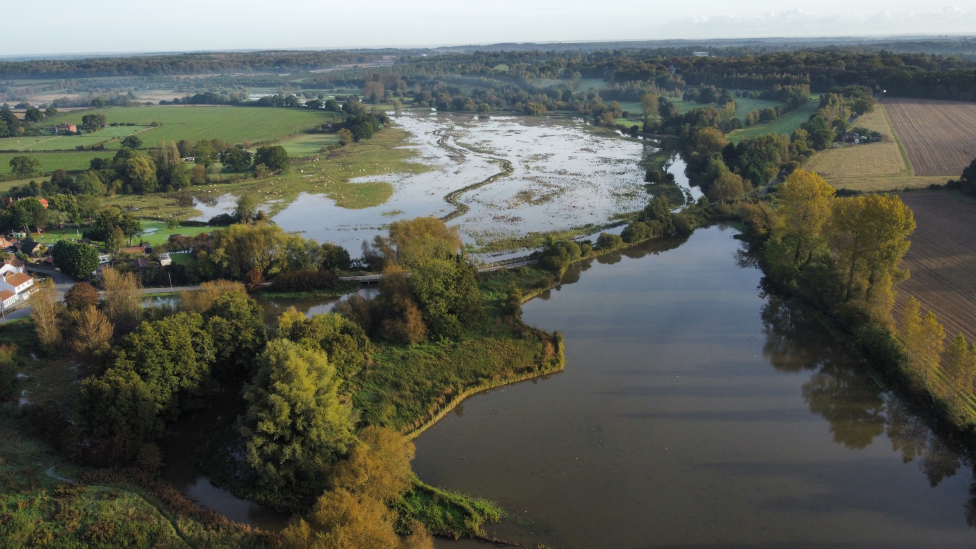Essex weather warning upgraded ahead of Storm Ciarán
- Published

The Met Office warned further flooding was possible just weeks after Suffolk was badly affected
Weather warnings have been issued by the Met Office for the East of England as it prepares to feel the brunt of Storm Ciarán on Wednesday and Thursday.
Alerts for the Essex coast have been upgraded to amber - indicating potential risks to life and property - from 06:00 to 17:00 GMT on Thursday.
Yellow warnings have also been placed on more central Essex, Suffolk, Norfolk and Buckinghamshire from Wednesday.
Forecasters said the strong winds might disrupt travel and public services.
Where is Storm Ciarán going to hit?
Storm Ciarán: Damaging winds and heavy rain predicted
The amber weather warning of very strong winds has been applied to a coastal swathe of Essex from Shoeburyness, taking in Southend, Brightlingsea, Clacton, Frinton-on-Sea and up to and around Walton-on-the-Naze.
There is yellow alert for heavy rain from 18:00 on Wednesday to 23:59 on Thursday for Buckinghamshire, and Southend and Thurrock in Essex.
A yellow warning of strong and damaging winds has also been put in place from 21:00 on Wednesday to 23:59 on Thursday for parts of Norfolk, Suffolk and more central areas of Essex, including Chelmsford, Braintree and Halstead.
What do the weather warnings say?
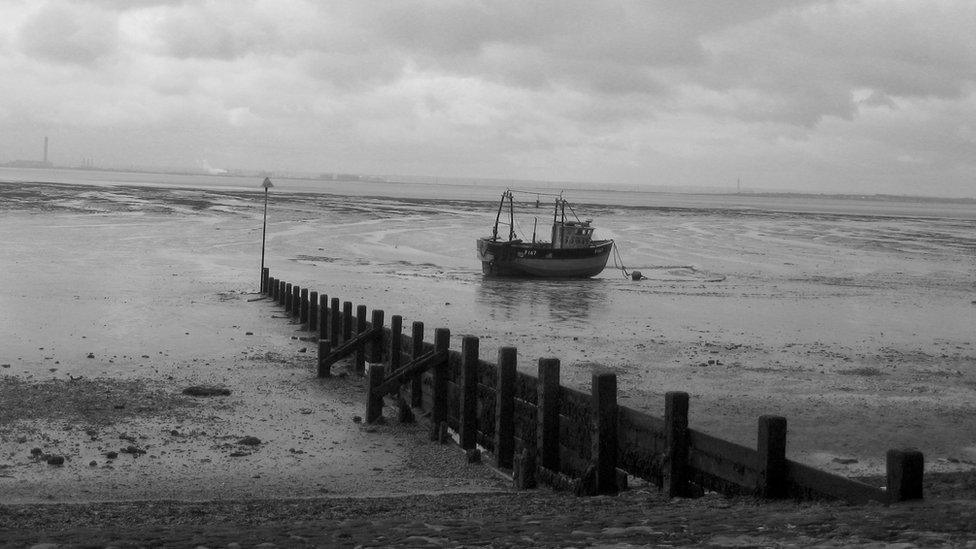
Strong winds and heavy rain are expected to hit Southend in Essex
Storm Ciarán could bring a period of disruptive weather, with wind speeds predicted to reach 50 to 60mph (80 to 97km/h).
The amber weather alert has warned possible flying debris could pose a "danger to life" and structural damage may occur.
The Met Office said, external buildings and homes could be damaged, with the storm predicted to bring down power lines and trees.
Large waves around coastal areas could also pose dangers and cause damage to nearby properties.
Roads, bridges and railway lines may have to close, while there could be delays and cancellations to buses, trains, ferries and flights.
Why is it called Storm Ciarán?
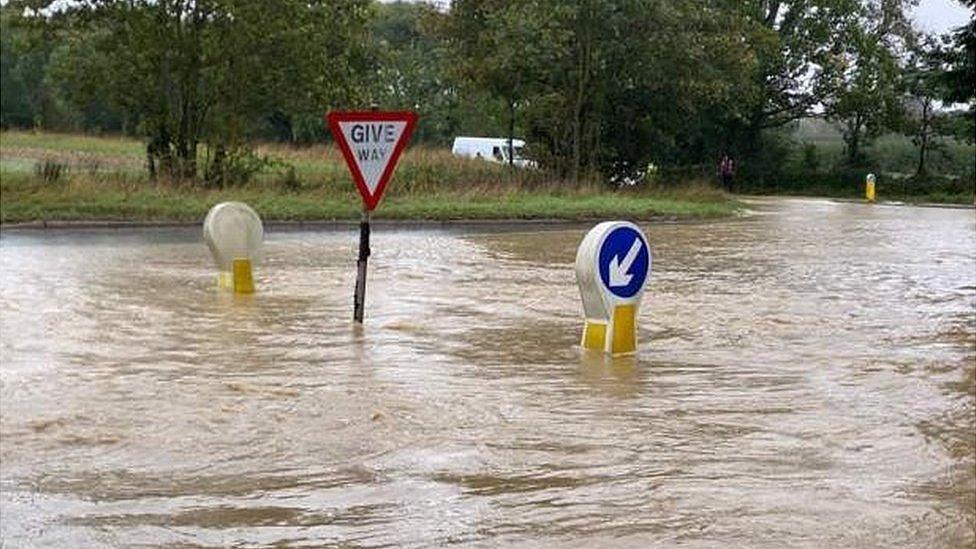
A flooded junction in Stradishall was among the areas affected in October
The practice of naming storms has long been established in the US, dating back to the 1950s.
The idea was to make it easier for people to engage with weather forecasts, as naming storms and other major weather events makes them more relatable - and easier to discuss and compare over time.
The Met Office in the UK agrees, believing that it is easier to follow the progress of a storm on TV, radio, or social media if it has a name.
What happened during the last named storm?
Video shows water gushing into Needham Market home in October
Last month, a major incident was declared in Suffolk after Storm Babet caused severe flooding.
A deluge of heavy rain led to roads being blocked, while homes and businesses were damaged.
Some towns and villages in Norfolk and Cambridgeshire were also affected.

Follow East of England news on Facebook, external, Instagram, external and X, external. Got a story? Email eastofenglandnews@bbc.co.uk , externalor WhatsApp 0800 169 1830
Related topics
- Published31 October 2023

- Published31 October 2023
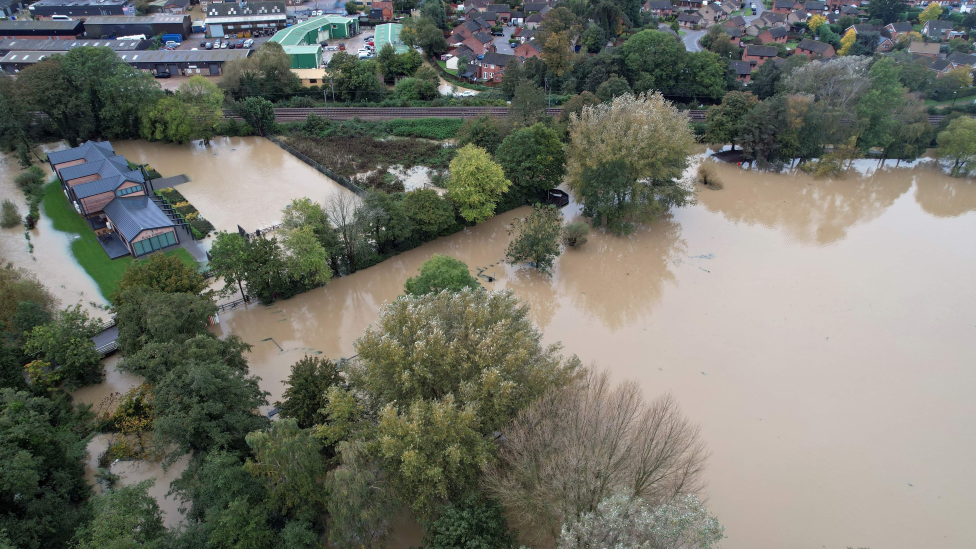
- Published27 October 2023

- Published24 October 2023
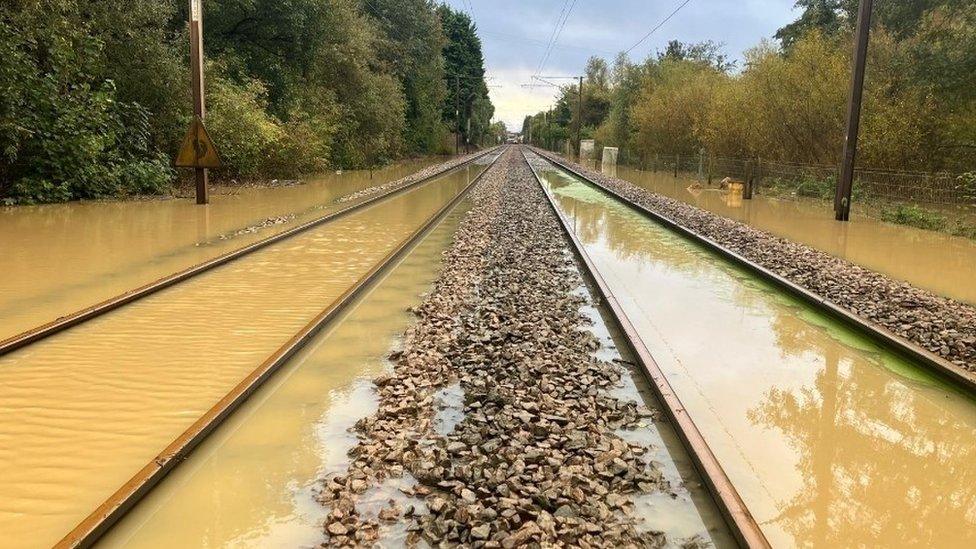
- Published24 October 2023
